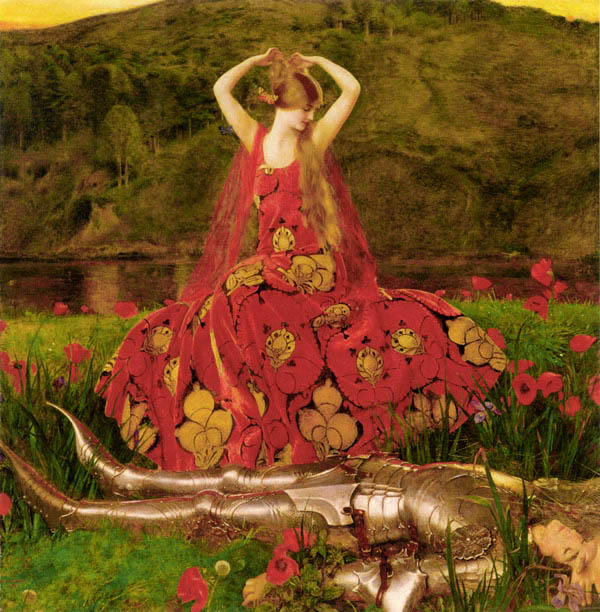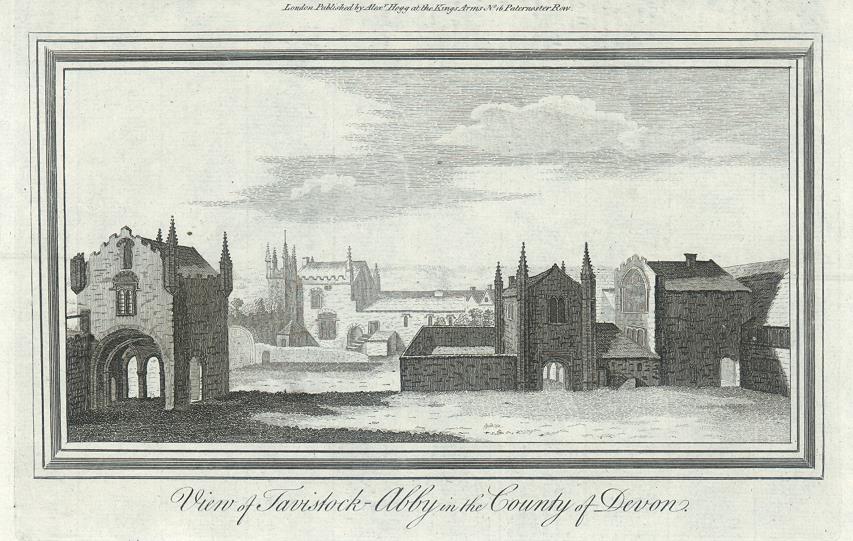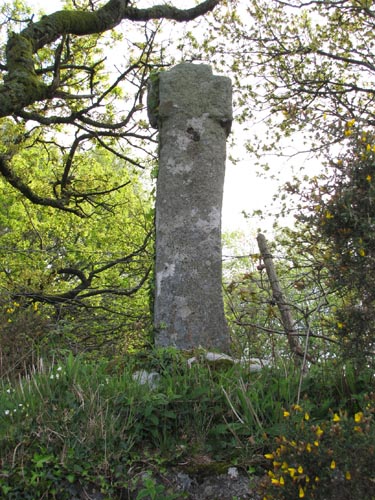
Most of the land through which the Great Road passes is extremely barren, and as such its route is determined by a continuous compromise between two absolutes: distance and water supply. No-one setting out on the arduous months-long journey from east to west, or vice versa, wants to make it any longer than it has to be: and for such travellers, the ideal route for the Road to take would be as close to a straight line as the intervening terrain permits. In practise, however, that hypothetical straight line would take you through some of the most arid regions in the world, so dry that horses and men alike would perish of dehydration if they attempted to follow it; and so the Road is forced to twist and turn, threading the oases together like beads on a string. Each oasis forms a natural choke point through which all merchants and travellers must pass, generating opportunities for toll-taking and extortion: and the larger and more isolated an oasis, the greater the potential wealth that can be extracted from the traders and caravans passing through. If he can take and hold such a location for just a few years at a stretch, even the pettiest of bandit chieftains can draw off so much gold that he will swiftly swell into a king.
These, then, are the Oasis Kingdoms: small states whose economies are based on serving and taxing the east-west traffic that passes through them. In theory, these tiny kingdoms have the power to hold mighty empires to ransom by choking off their trade; but in practise their rulers generally recognise that their prosperity depends upon the Great Road remaining a reliable artery of commerce, and limit their tolls to the merely extortionate rather than the outright prohibitive. Cut off from the outside world by hundreds of miles of desert, they are mostly left to their own devices by the distant empires whose caravans they tax, their direct conquest usually regarded as being more trouble than it's worth. (It's been tried. They usually regain their independence, de facto if not de jure, within a century at most.) But their small size and limited agricultural base means that their kings must depend upon hired mercenaries for protection, and even the strongest of them could not possibly stand up to a serious punitive expedition from one of the great empires of the east, south, or west - a fact which generally keeps the petty tyrants who rule them from getting too greedy, at least when high-status travellers and the scions of great merchant houses are concerned.

Given that a group of PCs could easily pass through a dozen or more oasis kingdoms in the course of a long enough journey down the Great Road, there's little point in trying to enumerate them all separately. Instead, the outline of a given kingdom can be generated using the following tables.
How big is the oasis? (roll 1d6)
- Tiny. This 'kingdom' would be little more than a village if it wasn't for its strategic position.
- Small. The kingdom consists of a single small city surrounded by a meagre amount of agricultural land. Much of its food is imported.
- Moderate. The kingdom consists of a single city surrounded by relatively fertile land. It is (just) self-sufficient in terms of food and basic goods, but for wealth and luxury goods it is entirely dependent upon the Great Road.
- Large. The kingdom consists of a large city and a few smaller towns, set in a substantial quantity of carefully irrigated farmland. Even without the Great Road, it could probably function as a petty kingdom in its own right.
- Very large. The kingdom has multiple cities, and is a centre for trade and manufactures. Caravans would probably visit it to buy and sell in its markets even if they weren't forced to by the local geography.
- Huge. The kingdom is actually a substantial polity with many towns and cities, containing a hundred miles or more of the Great Road within its borders.
(NB: the traits of these cities, as opposed to the kingdom as a whole, can be generated using the tables here, replacing the 'government' section with the more detailed information below.)
How much of a chokepoint is it? (Roll 1d4)
- There are other oases that trade could pass through; this one's just the most convenient. The kingdom's rulers are forced to keep their tolls moderate, knowing that traders will simply adopt an alternative route if the taxes get too high.
- There's another oasis that trade could conceivably pass through, but it's either much further away or cut off by very rough terrain. The kingdom's rulers keep their tolls high, knowing that only the very desperate (or the very poor) would undertake the much harder journey involved in circumventing it.
- There's another oasis not too far away, but it's currently inaccessible to trade due to some external factor (war, pestilence, monsters, bandit infestations, etc). The kingdom knows that this situation can't last forever, and has jacked up its tolls to well above normal levels to try to cash in on it while it lasts. The merchant houses are very interesting in resolving this problem by any means necessary, and the local government is just as interested in ensuring that their efforts to do so come to nothing.
- This is the only oasis for miles and miles and miles. The kingdom imposes eye-watering tolls on traders, its greed restrained only by the knowledge that if it pushes its luck too far, one day it'll find an army rather than a caravan waiting outside its gates...

Who enforces the law? (roll 1d8)
- Steppe warriors hired from a distant khanate. Devastating horse archers. Fiercely proud of their traditions. They and the local population regard one another with mutual contempt.
- An order of warrior monks based in a nearby monastery, run by the dominant local religion. Willing to serve the local ruler for as long as his laws favour and enrich their faith.
- Desert bandits gone legit, bought off by the local ruler in exchange for a cut of his profits. Old habits die hard, and they still engage in occasional bouts of looting and extortion when they think they can get away with it.
- Slave soldiers purchased in distant markets and marched off to fight for their new owners. Discipline is enforced through ruthless punishments and the promise of freedom and promotion for those who distinguish themselves.
- A rabble of sell-swords from a dozen nations, with nothing in common except their willingness to fight for anyone who pays them. Discipline is poor, and brawls between regiments of different ethnicities are commonplace.
- A highly professional company of foreign mercenaries, who know that their ability to command top rates from their employers depends upon their reputation for ruthless discipline. They live in their own barracks complex and keep themselves aloof from the local population.
- A detachment of soldiers from a far-off empire, sent to 'assist' the local government in protecting the flow of trade. They have mostly 'gone native' and married local women, and would probably side with the locals against the empire if it came right down to it.
- A detachment of soldiers from a far-off empire, sent to 'assist' the local government in protecting the flow of trade. Their true loyalty is still to the empire, and they would overthrow the local government overnight if their distant emperor ordered them to do so.
How easy is it to dodge the tolls? (roll 1d6)
- Easy. The government is lax and their tax-gathering system is corrupt and inefficient. Any plan that isn't totally stupid will probably work.
- Moderately easy. The tax-gatherers are diligent, but have no real loyalty to the government and will wave through just about anything for a big enough bribe.
- Variable. The tax-gatherers are loyal and efficient, but they're almost all recruited from one specific religious or ethnic group and are willing to look the other way for the 'right' kind of people.
- Variable. The tax-gatherers are loyal and efficient, but they've been heavily infiltrated by some other organisation (roll 1d3: 1 = criminal mafia, 2 = religious cult, 3 = political conspiracy), who will see to it that you don't need to pay tolls provided you can do a little favour for them in exchange...
- Hard. The tax-gatherers are well-organised and highly-motivated. Unless you have friends in high places, you'll need to pay a small fortune in bribes to get them to look the other way.
- Very hard. The ruler's secret police keep the local tax-gatherers in a state of perpetual paranoid terror, making them very difficult to persuade or bribe. Hide your most valuable goods inside your least valuable goods and hope for the best...

Who rules it? (Roll 1d12)
- A bandit chief made good, trying his best to come across as more than the common brigand that he until recently was and failing pretty miserably. His children are getting expensive educations and view him as a total embarrassment. This kingdom would be a great place to sell something very expensive and very, very tasteless.
- A dynastic king, who is only moderately cruel or greedy by the (admittedly low) standards of the oasis kingdoms.
- A dynastic king, who is actually a wise and enlightened man, beloved by the people for his willingness to spend his tax revenue on great public works rather than pointless self-indulgence.
- A dynastic king with a well-earned reputation for insane paranoia and arbitrary acts of tyranny. Everyone hates him, but his mercenary soldiers will continue to enforce his edicts as long as they keep getting paid. Perhaps if someone could make them a better offer...?
- An elderly dynastic king with many wives and many, many children, who constantly plot and scheme against each other as to who will take the throne when the old man finally dies. A skilled spy or assassin could make a quick fortune here.
- In theory, a dynastic king. In practise, a merchant consortium to whom he is so deeply in debt that he is little more than a puppet in their hands. (The fact that they pay the wages of his mercenaries doesn't help.) Their traders get very favourable treatment from the local courts and tax collectors, much to the fury of their rivals.
- In theory, a dynastic king. In practise, the religious organisation of which he is a desperately devout adherent. These days his palace looks more like a temple, and he never makes a major decision without consulting his 'spiritual advisers' first. The kingdom's other religious communities are getting increasingly nervous about the situation, and fear that it's only a matter of time before they're forced to choose between conversion and exile.
- In theory, a dynastic king. In practise, his vizier, who makes all the real decisions while the king wastes his days cavorting with concubines and going on hunting expeditions. Fortunately for the kingdom, the vizier is a harsh but fair man who has the kingdom's best interests at heart.
- In theory, a dynastic king. In practise, his vizier, who makes all the real decisions while the king wastes his days cavorting with concubines and going on hunting expeditions. Unfortunately for the kingdom, the vizier is a greedy and selfish man who cares only for his own enrichment.
- A governor appointed by the distant empire which notionally rules this place, whose assignment here was essentially a punishment disguised as a promotion. He cannot stand being stuck out in the middle of the desert and is absolutely desperate to find a way back into the good graces of the far-off imperial court. A shocking proportion of his budget is wasted on importing luxury goods from his far-off homeland.
- A governor appointed by the distant empire which notionally rules this place, who has woken up to the fact that he's far too distant from the centres of power for his superiors to exercise any meaningful control over his actions, and mostly acts like the petty tyrant that he effectively is. Vaguely planning to declare independence and found a new dynasty as soon as the time is right.
- A khan from the great steppe, whose horsemen conquered the place years back. He's still very uncomfortable in his palace, and yearns for his yurt and the open steppe. The people still haven't come to terms with being conquered by people they consider barbarians, but if his rule endures for another few decades then his descendants will probably become a local dynasty much like any other.


















